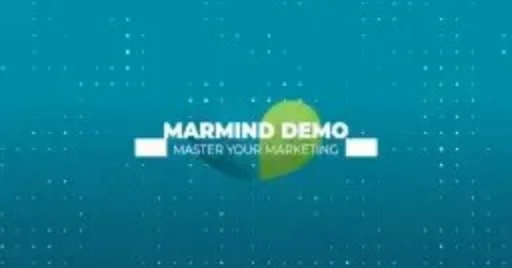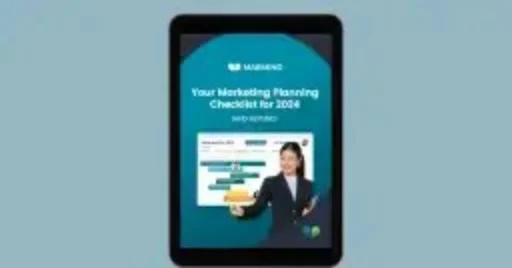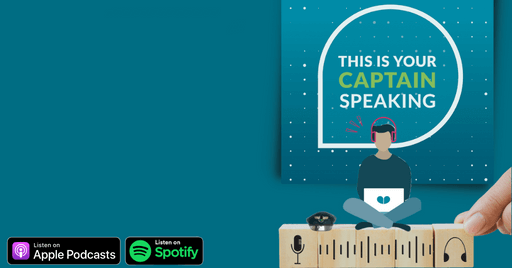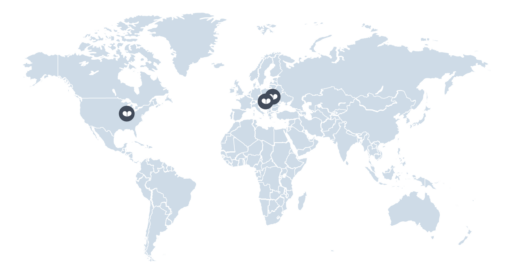Marketing teams usually come with a diverse set of skills, a flurry of ideas, and a passion for driving brand awareness. However, without the right tools to manage resources and streamline processes, even the most talented marketing teams can find themselves in a state of disarray.
This is where Marketing Resource Management (MRM) solutions come into play, and among them, Marmind shines as a beacon of efficiency and organization. But, first things first.
What is Marketing Resource Management?
Marketing Resource Management, or MRM, is a technology-driven set of processes designed to enhance marketing operations. It’s the backbone of a marketing department, providing structure and support to various functions.
For instance, think of a marketing campaign for a new product launch. There are numerous tasks involved, from market research to content creation, and from media planning to performance tracking. MRM serves as the central hub that connects all these tasks, ensuring that they are executed in a coordinated and efficient manner.
MRM’s significance in business is undeniable. It’s like the oil that keeps the marketing machinery running smoothly. Without it, tasks can become disjointed, resources may be wasted, and the overall efficiency of the marketing department can plummet.
Key Features of Marketing Resource Management Tools
What features should MRM tools have to make an impact?
Planning and Budgeting Tools: The Heart of MRM
Planning and budgeting tools are the heart of any marketing resource management software. They allow businesses to map out their marketing strategies, allocate resources effectively, and keep track of their spending. Imagine you’re planning a multi-channel marketing campaign.
You need to allocate budget for social media advertising, email marketing, content creation, and more.
A planning and budgeting tool can help you distribute your budget effectively, track your spending, and ensure that you’re getting the most bang for your buck.

Project Management Capabilities: The Virtual Project Manager
Project management capabilities allow teams to collaborate, assign tasks, and monitor progress all in one place. It’s like having a virtual project manager who never sleeps.
For instance, if you’re managing a team working on a content marketing project, you can assign tasks to team members, set deadlines, and track progress all within the marketing resource management software.
This not only keeps everyone on the same page but also allows you to spot any potential issues early and address them before they become major problems.
Asset Management Functionality: The Digital Library
Asset management functionality provides a centralized location for storing and managing all marketing assets. It’s like having a digital library where you can find any book you need in seconds. Whether it’s a logo, a product image, or a promotional video, you can store it in the marketing resource management software and retrieve it whenever you need it.
This eliminates the need for endless email threads and saves valuable time that can be used on more strategic tasks.
Performance Analytics and Reporting: The Clear Picture
Performance analytics and reporting tools provide insights into the effectiveness of marketing campaigns. They offer a clear picture of what’s working and what’s not.
For example, if you’ve launched a social media campaign, these tools can show you how many people saw your posts, how many clicked on your links, and how many made a purchase.
This data can help you understand what resonates with your audience and what doesn’t, allowing you to refine your strategy and improve your results.
Integration with Other Systems: The Unified Platform
The ability to integrate with other systems is a feature that sets marketing resource management software apart. They can connect with CRM, ERP, and other business systems, creating a unified platform for managing all business operations.
For example, if a customer fills out a form on your website, that information can be automatically sent to your CRM system.
This seamless marketing management integration can save time, reduce errors, and improve customer service.
Benefits of Implementing Marketing Resource Management Software
Improved Operational Efficiency: The Well-Oiled Machine
Operational efficiency is the first and most obvious benefit. Best marketing resource management software streamline marketing processes, eliminate redundancies, and automate repetitive tasks. It’s like having a well-oiled machine that runs without any hiccups.
For instance, instead of manually tracking the progress of a marketing campaign, you can use the MRM system to automate this process. This not only saves time but also ensures that you have real-time data at your fingertips.
Enhanced Collaboration and Communication: The Virtual Meeting Room
Enhanced collaboration and communication is another benefit that best marketing resource management software offer. They provide a platform for teams to work together, share ideas, and stay updated on project progress. It’s like having a virtual meeting room that’s open 24/7.
For example, if a team member has a great idea for a blog post, they can share it on the MRM platform and get feedback from the rest of the team. This fosters a culture of collaboration and innovation, which can lead to better marketing outcomes.
Better Budget Control and ROI Measurement: The Financial Analyst
MRM solutions provide tools for tracking spending, measuring the effectiveness of marketing campaigns, and calculating ROI. It’s like having a financial analyst who specializes in marketing.
For instance, you can use the MRM system to track how much you’ve spent on a particular marketing campaign and how much revenue it has generated. This can help you understand which campaigns are delivering a good return on investment and which ones need to be tweaked.
Choosing the Right MRM Solution for Your Business
#1 Understanding Your Business Needs
First, understand your business needs. Identify the challenges your marketing department is facing and the features you need in an MRM solution to address these challenges.
For instance, if your team is struggling with managing digital assets, look for best marketing resource management software with strong asset management functionality.
Implementing MRM software that goes along with your workflow management is important for your success.
#2 Setting Your Budget
Before you start evaluating different MRM solutions, set a budget for your marketing management software investment. This will help you narrow down your options and avoid wasting time on solutions that are beyond your financial reach.
#3 Evaluating Different MRM Solutions
Next, evaluate various marketing resource management software. Look at the features they offer, their pricing, and their reputation in the market.
For example, if your business operates in multiple countries, you might want an MRM solution that supports multiple languages and currencies.
#4 Checking Vendor Reputation and Reviews
Don’t forget to check the reputation of the MRM solution vendors. Look for reviews and testimonials from other businesses. This can give you a good idea of the quality of the solution and the level of customer service the vendor provides.
#5 Requesting a Demo or Trial
Most marketing resource management software vendors offer a demo or a trial period. Take advantage of this to get a hands-on experience of how the digital asset management solution works and whether it meets your needs.
#6 Considering Future Needs
While it’s important to choose MRM systems that meet your current needs, don’t forget to consider your future needs. Look for a solution that is scalable and can grow with your business.
#7 Implementation and Training
Once you’ve chosen marketing resource management software, it’s time to implement it. This involves setting up the system, migrating data, and training your team to use the new ditial asset management software.
For instance, you might need to train your team on how to use the project management features or how to generate reports.
#8 Review and Adaptation
Review and adapt. Always. Monitor the performance of the MRM solution, gather feedback from your team, and make necessary adjustments.
For example, if your team finds the asset management functionality difficult to use, you might need to provide additional training or look for a marketing automation solution that is more user-friendly.
#9 Update and Upgrade
As your business grows and evolves, so will your MRM needs. Regularly update and upgrade your best marketing resource management software to ensure it continues to serve your business effectively. This might involve adding new features, integrating with new systems, or expanding the user base.
Marmind: The Premier Marketing Resource Management Solution
Marmind stands out as a leading Marketing Resource Management (MRM) solution, designed to drive efficiency and streamline marketing operations.
Streamlined Marketing Processes
MARMIND serves as a centralized hub for all marketing activities, eliminating the chaos of disjointed processes. It’s like having a command center where you can oversee and manage all your marketing operations.
- Unified Platform: MARMIND brings together all your marketing activities under one roof. From planning and budgeting to execution and analysis, every aspect of your marketing strategy can be managed within MARMIND.
- Automated Tasks: MARMIND automates repetitive tasks, freeing up your team to focus on strategic initiatives. This automation leads to significant time savings and improved resource management or marketing assets.
Enhanced Collaboration
MARMIND is a great collaboration tool, making it easier for marketing teams to work together and stay aligned.
- Shared Workspace: MARMIND provides a shared workspace where teams can collaborate on projects, share ideas, and keep everyone updated on progress on asset creation, or marketing analytics.
- Real-Time Communication: With MARMIND, your team can communicate in real-time, ensuring everyone is on the same page and working towards the same goals.
Actionable Insights
MARMIND’s advanced analytics and reporting capabilities provide a clear view of marketing performance.
- Data-Driven Decisions: With MARMIND, you can make data-driven decisions. Its analytics tools provide insights into what’s working and what’s not, helping you refine your marketing strategy.
- Performance Tracking: MARMIND allows you to track the performance of your marketing campaigns in real-time. This means you can quickly identify and address any issues, ensuring your creative workflow is always on track.
Actionable Insights
Seamless Integration
MARMIND’s ability to integrate with other systems makes it a versatile solution that fits seamlessly into any business infrastructure.
- Integration with Other Systems: MARMIND can integrate with CRM, ERP, and other business systems, creating a unified platform for managing all business operations.
- Single Source of Truth: By bringing all your marketing data together, MARMIND serves as a single source of truth. This eliminates data silos and ensures everyone has access to the same, up-to-date information.
MARMIND, with its robust suite of tools and user-friendly interface, provides marketing projects with the resources they need to manage their operations effectively. Automating repetitive tasks, fostering collaboration, and providing actionable insights, MARMIND empowers marketing teams to focus on what they do best – creating innovative campaigns that drive brand awareness and business growth.
Marketing Resource Management (MRM) is a technology-driven process designed to streamline marketing operations. It involves the use of MRM software to manage digital assets, coordinate marketing efforts, and measure marketing ROI.
MRM software typically includes features for strategic planning, project management, digital asset management, campaign management, and performance management. It serves as a hub for the entire marketing team, facilitating collaboration and improving efficiency.
MRM software provides a digital asset management platform where marketing assets can be stored, organized, and easily retrieved. This serves as a digital asset manager, and helps in maintaining brand consistency across marketing and communication channels with brand assets.
MRM software can automate repetitive tasks, streamline approval processes, and provide insights into campaign performance. This allows marketing departments to focus on work management and task management instead of lengthy approval process.
Yes, many resource management software systems can integrate with other business processes and systems, such as CRM and ERP. This creates a marketing machine – a unified management platform that can drive efficiency across the business and expense tracking.
Author

Peter Fechter
Peter is Digital Marketing Manager at MARMIND and mainly responsible for website and lead management. When he's not busy creating content, he is developing new strategic approaches for campaign planning.










